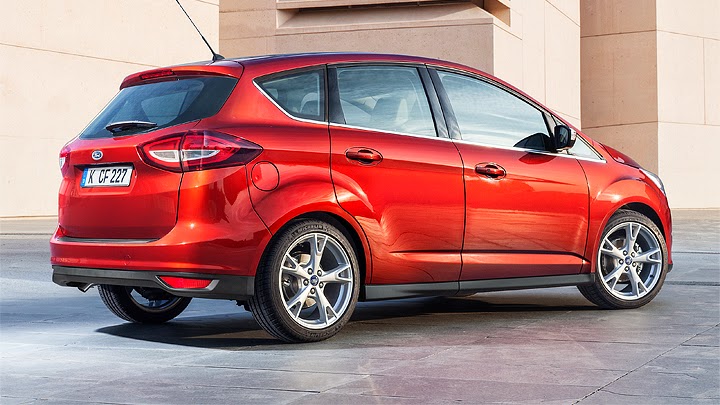
This is the rare kind of car facelift where the outside received less attention than the inside. The thing is, C-Max’s current iteration has reached the exact same point in which Ford’s Kinetic design language has been during the past one or two years: old enough to have already conquered the customers’ approval, but still way too young to make the company worry with big operations. Therefore, the only work was to put these two together: the new minivan is attractive and has enough equipments to face its direct competitors, but without any surprises. Many automakers create minivans in such a conservative way because they are not so easy to sell: the potential buyers are many, but competing with crossovers and station wagons makes them very hard to convince.
The refreshed C-Max, therefore, will go on sale next year with very similar changes to those adopted by Focus just some months ago. The front fascia combines the signature hexagonal grille to fog lights and lower air intake joined into one single element, while only the five-seater variation had its tail lights redesigned – the seven-seater Grand C-Max differs from the rear doors. These have sliding opening and are followed by triangular windows and smaller tail lights. Both received daytime LEDs, too, but the biggest news are waiting for you to open the doors: Ford claims to have improved trim quality and redesigned the central console. The glovebox is easier to use, multimedia devices are easier to connect, and now it is possible to carry a one-liter bottle and a large cup at the same time.







Going to the electronic additions, MyKey enables the owners to set top speed and stereo volume limits, in order to allow their teenager children to drive the car without worrying so much. Sync 2 has improved connectivity features, takes many of the function controls to the 8” touchscreen and allows you to use it by voice commands. Active City Stop helps to prevent accidents at speeds of up to 50 kph. And there are other interesting items, such as automatic perpendicular parking assistance and Ford’s new tailgate-opening system: if your hands are full while approaching the car, you can do the trick just by moving your feet under the bumper. This is the kind of characteristics that really seduce people who are looking for a new minivan.
Both C-Max and Grand C-Max had some engine changes, as well. The diesel range has replaced the four-cylinder TDCi 1.6L with a 1.5L unit, capable of 118 hp and expected to be very popular. The other is a 2.0L, which received start/stop system for the first time and now emits 20% less carbon dioxide than before. Switching to gasoline, the fuel-saving is also present and equips an EcoBoost range. The entry-level unit is the 99-hp or 123-hp “multi-award winner” 1.0L, and it is followed by a 148-hp or 180-hp 1.5L. Ford’s caution while updating these minivans comes from the fact that they have sold 1.2 million since its launch, in 2003. The current generation, in turn, has detained alone more than a tenth of its segment during this year.